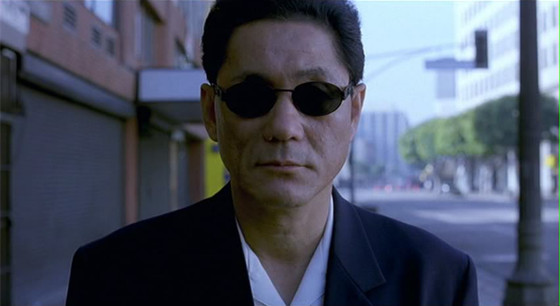
Takeshi Kitano has built a cinematic career as diverse and rich as his personality. Starting as a stage comedian, back in the seventies, the multifaceted artist slowly and steadily established his charismatic persona in Japan. Spreading his humour through the television, he was recognised as one of the country’s most prominent comedians long before entering the world of cinema and its festival circuits.
One of Kitano’s undoubted qualities is his unique ability to play simultaneously in multiple fields of art. The ones who have witnessed the slapstick, physical humour of Takeshi’s Castle may be taken aback by his style shift when he became a filmmaker. The smiling colourfully dressed host of the popular Japanese entertainment show quickly turned into the director of fierce gangster films like Violent Cop and Boiling Point. Never abandoning his acting passion, Takeshi also starred in his films, embodying rough and harsh criminal-related personalities.
Kitano is currently one of the most cherished and acclaimed modern filmmakers. In contradiction with other East Asian directors, he is praised and loved inside the borders of his motherland as much as out of them. Criticising Japan in plenty of his films, by highlighting its social inequity and corruption, he never fails to simultaneously exhibit his love for its cultural wealth, by incorporating traditional and folklore elements into his creations.
In the same spirit, even after becoming the director of blunt drama and crime films, he never quits being humorous and humanistic, in a bitter-sweet but heart-felt way. His cinematic style, minimalistic but intense, encompasses his goal to give birth to realistic films that shake the viewers out of their comfort zones in an refined and polemic way. The list below features several traits that make Takeshi’s film sphere so noteworthy and pleasurable.
1. The Yakuza is omni-present
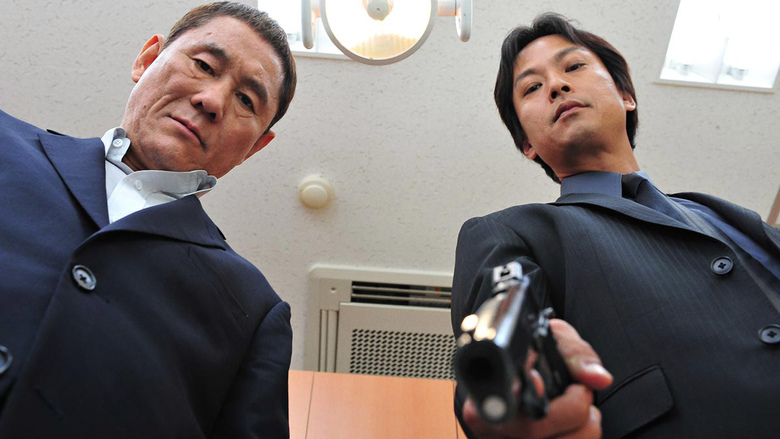
Yakuza has always had a special place in Japanese cinema. Be it in the monumental films of Akira Kurosawa or the much lighter film series of Zatoichi, the filmmakers of the country have repetitively favoured to depict the operations of the historical criminal organisation. It can be safely argued though that no one has ever studied and approached the subject as much as Kitano.
It’s not much of a secret that Takeshi has a vivid fascination with yakuza. Most of his films are related with its criminal syndicates, in a direct or an indirect way. The connection of the director to that particular subject has its roots in his own life and personal experiences. Kitano has mentioned in numerous interviews that he could have ended up being a yakuza member, as a youngster, as many of his friends and classmates had affairs with the organisation.
Furthermore, while being a stage comedian, he has allegedly spent plenty of nights having drinks with yakuza associates, listening to their tales and stories. What is really interesting about the director’s cinematic take on the subject is the variety of the depictions that he chooses to give.
In films like Sonatine or Outrage, the yakuza members are presented as ruthless and cruel men, with a twisted sense of honour that lets them kill and exploit indiscriminately without holding themselves back. In Boiling Point and his latest film Ryūzō and The Seven Henchmen, the aforementioned illustration changes radically and the criminals are portrayed as caricatures in an ironic and hilarious way.
In other cases, like in the heartbreakingly dramatic film Dolls, Takeshi selects to show the emotional side of a gangster’s life, when he is called to sacrifice his personal well-being for the sake of committing himself to the organisation. No matter which depiction he chooses, Kitano is always realistic and accurate. The rituals of yakuza, from the initiation processes to their symbolic and sacred tattoos, are carefully reconstructed by the director who proves that he knows what he is talking for.
2. Acting in his own films
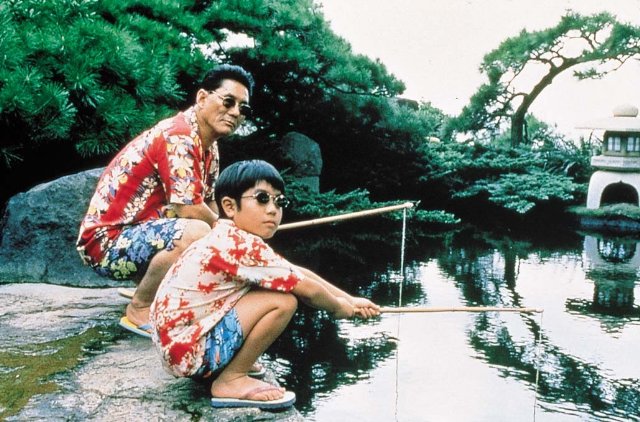
Becoming a prolific and art-house favourite director, Takeshi never quit being an actor. His past as a comedian along with his preference for crime and dramatic plots are united under his unique and characteristic acting style. Always serious and bold, borderline inexpressive, the Japanese auteur managed to transform his face into his signature, a living mask that incorporates searing irony and literally unblinking ferocity mixed with unexpected doses of compassion, pain and hilarity.
When Kitano smiles, his grin is enigmatic and when he speaks his voice sounds hoarse but calm, breaking the silence of his characters that are usually deadpan and tight-lipped. It could be argued that his stage acting past is reflected in his film performances. His movements are semi-theatrical, his marching stable and slightly limping, his hands inside the pockets of his sloppy trousers. Takeshi reminds a little bit of a silent-film actor, clumsy but solid, serious but melancholic.
His performance in Kikujiro, one of his few non-yakuza-related films, can be illustrative. In the movie Kitano plays a middle-aged opportunistic gambler who is, by luck, made to accompany a young boy in his quest of locating his mother. Kitano’s character is not likeable at all; he shouts at the young sweet boy, cares more about his passions than his young companion’s needs and his overall behaviour is precisely the opposite of what it should be. But, nevertheless, there are interruptions of empathy and solicitude that are given in respect to the hero’s personality.
The greatest example, though, of Kitano’s signature elliptic performances comes from one of the most famous scenes of Sonatine; yielding a gun, the hero of the film commits suicide grinning in a stoic and fearless manner. Takeshi’s acting is undoubtedly a huge part of his films, his soul on the move.
3. Minimalism
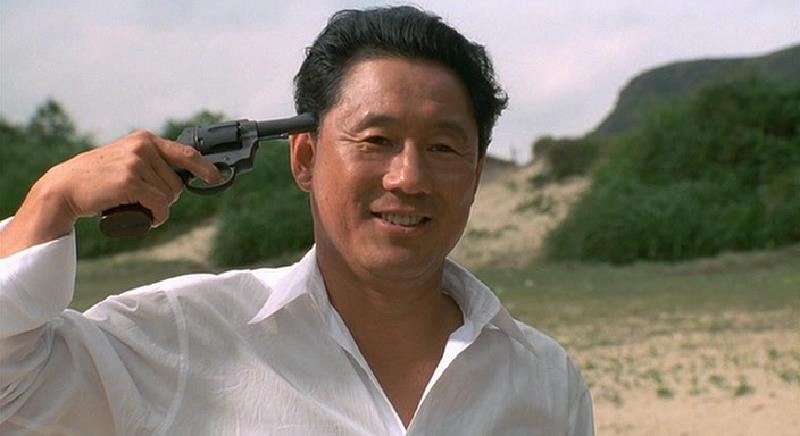
Takeshi Kitano’s minimalism is much different from the one that other modern Japanese directors prefer and exhibit. Filmmakers like Hirokazu Koreeda and Kiyoshi Kurosawa also favour a filmmaking and narrative style that is eloquent in its simplicity and lack of extravagance and flamboyance. The difference with Takeshi, though, is that his style speaks of violence and wrath in the calmest manner possible.
Just like in the example with the suicide scene in Sonatine, the director almost always chooses to portray even the most gruesome of acts in a tranquil and bizarrely serene way. The anger, the despair, the pain, the craving for revenge and retaliation lead to the expected cinematic catharsis but that is done without changing the soothing tempo of shooting and acting. Kitano’s minimalism is strengthened by a series of strategic choices that he makes as the director, the screenwriter and editor of his films.
Takeshi favours static shots; just like his acting style, his filmmaking techniques achieve to give birth to a solid stillness. There is not much movement and the long takes secure the establishment of a visual quietness that perfectly contrasts the violent deeds of the heroes. The editing, with a few exceptions, also contributes in the construction of his austere aesthetics. There are no jump-cuts, no rough cuts and when it gets faster, it lasts only for a brief moment. There are no saturated colours, no camera filters and the sound and music are mellow and low just like the voices of the actors and actresses.
All the aforementioned elements are furthermore reinforced by Takeshi’s choice of landscapes. The director is in love with the sea and his films are governed by long sandy beaches, with calm, dim waves hitting their shorelines. When the shooting takes place in an urban setting, the buildings and the streets reflect the busy and impersonal cities that frame them, ruled by a routine that is calm but violent just like Kitano’s idiosyncratic style.
4. Employment of Japanese traditions and folklore
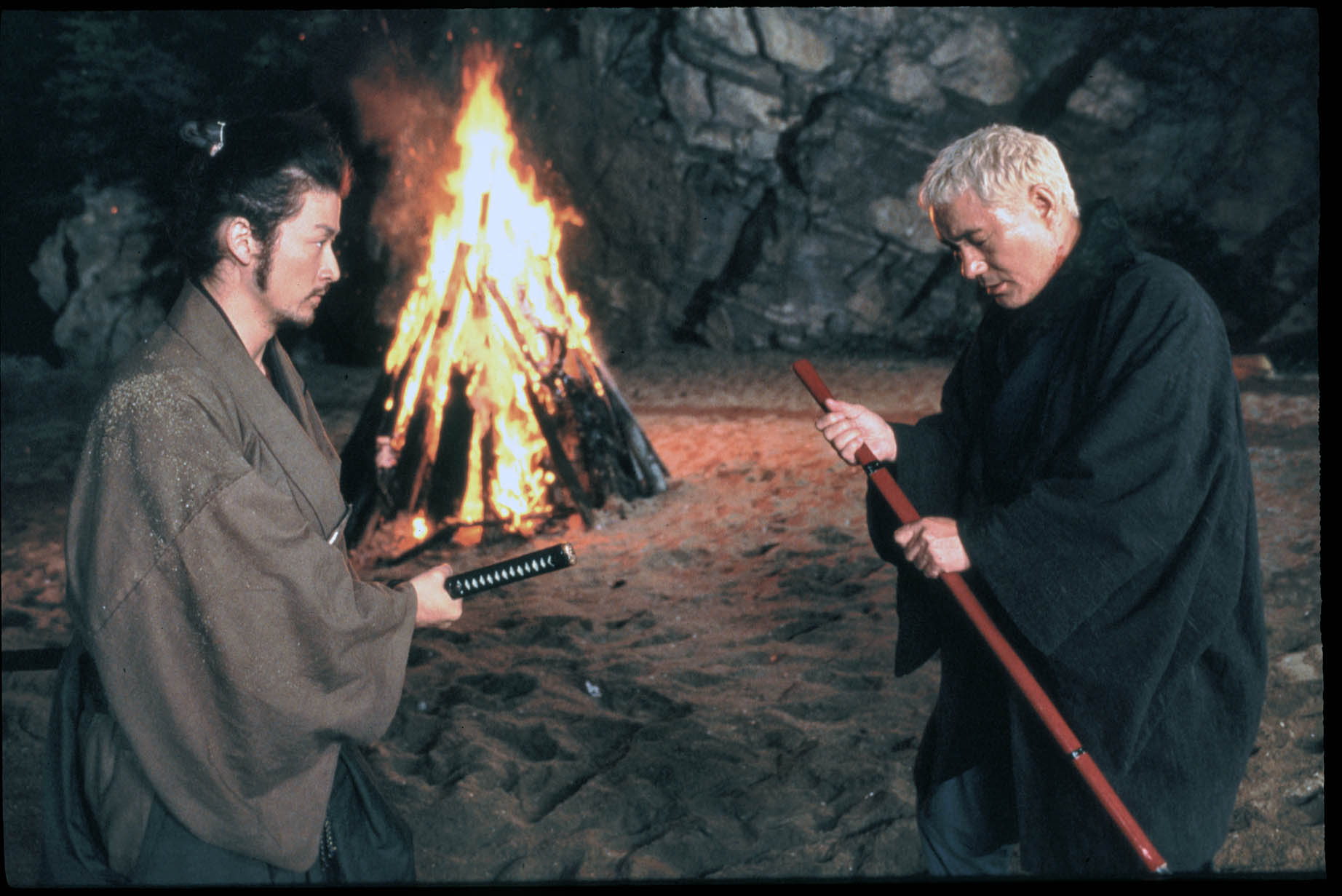
As it was stated above, Takeshi is always accurate when depicting the yakuza rituals and practices. Yakuza is, though, not the only component of Japanese society that the director incorporates into his films.
His movies always choose to contain structural elements of Japan and use them in the most unpredictable ways. In Sonatine, the heroes have an unexpected, improvised sumo wrestling competition on the beach. Their movements are perfectly choreographed in a rhythmical tempo that is underpinned by an erratic and experimental editing.
In Dolls, the three different love stories seem to be recounted through the actions of the puppets of a Bunraku theatre performance. The symbolic use of the puppets, their parallelism to the heroes and the title of the film showcase Kitano’s will to exploit Japanese cultural elements in a lyrical and meaningful way.
But Takeshi is not the kind of director that would employ traditional and cultural illustrations in a conventional way. He is subversive in his own unique way and his films adore to circumvent generic representations. An example of this fact can be traced in his gangster films. One could argue that remnants of some early Scorcese, or American crime filmmaking in general, are present in his work.
Takeshi’s gangster interpretations though are not like the ones of South Korean or Hong Kong directors where the western influences are loud and strong in the stylised violence that they construct. The Japanese director masterfully dodges any glorification of violence, that is always blunt and realistic. In the same spirit, when Kitano was called to offer his own cinematic reading of the legendary Zatoichi film series, he denied to romanticise them and build a performance that would resemble the one of the mighty Shintaro Katsu.
On the contrary, he took the blind masseur hero and modified him so that he could fit his own temperament. Takeshi respects the traditions of Japan but he also knows that they have to be moderately altered if they are about to stay fresh and alive.
5. He is the one in charge of writing and editing his films
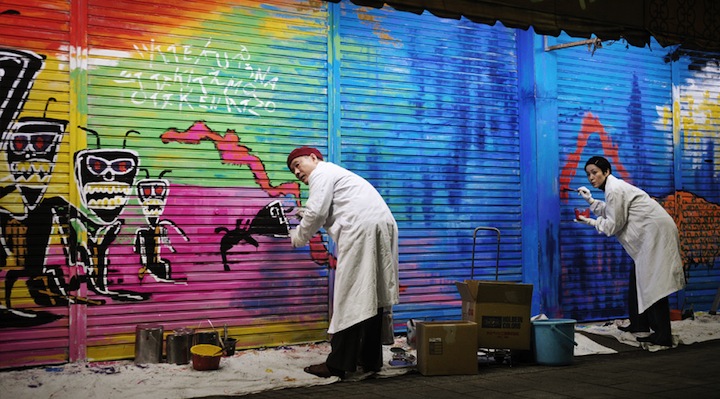
Kitano’s personality is as versatile as his career and for that reason the director could not confine himself just into the roles of an actor and a director. Takeshi is also in charge of writing and editing most of his films and has established his own film production company. This multitasking makes him the absolute authority of his movies. He is not only the main orchestrator of the visual part but also the mastermind behind the narrative and the distribution.
The artistic freedom that he gains from this choice secures that his films will keep on being his films; there is no one to ask for adjustments or dictate him that he should change the content or appearance of his work. Kitano has stated that one of his main goals is to make realistic films that make the viewer experience intense emotions. By being the person in front and behind the pre-production, production and post-production, he makes sure that the outcome of the filmmaking procedure will be in accordance to his vision.
Plenty of auteurs have made, to some degree, the same strategic choice. The difference with Kitano would be his loyalty to the same narratives and plot lines that he may slightly change but never completely give up. His obsession with yakuza criminals and his desire to recreate and enact the same roles and characters would possibly not be supported by some producers and screenwriters.
By being the one to produce and write his own films, he secures his beloved thematic repetitions while experimenting, at the same time, to the extent that he chooses to.